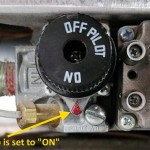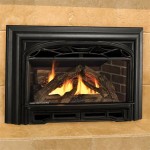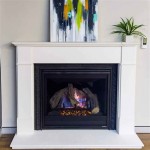How To Clean A Fireplace: A Comprehensive Guide
Maintaining a fireplace involves regular cleaning to ensure efficient operation, prevent fire hazards, and prolong its lifespan. Soot, creosote, and ash accumulate over time, posing significant risks if left unaddressed. This article provides a comprehensive guide to safely and effectively cleaning a fireplace.
Preparing for the Cleaning Process
Before initiating the cleaning process, proper preparation is crucial. This involves gathering the necessary tools and taking precautions to protect oneself and the surrounding environment. One of the initial steps is to wait at least 12 hours after the last fire to ensure the ashes have completely cooled down. Hot ashes can pose a serious burn risk and can also ignite flammable materials.
The next step involves assembling the required cleaning supplies. Essential items include:
- A fireplace shovel: This tool is used for scooping out ash and debris from the firebox.
- A stiff-bristled brush: This is ideal for scrubbing the firebox walls and removing stubborn soot deposits. A wire brush can be used for metal surfaces, while a softer brush is suitable for brick or stone.
- A vacuum cleaner with a hose attachment: A shop vacuum is preferred, as regular household vacuums can be damaged by fine ash particles. The hose attachment facilitates reaching into corners and crevices.
- Protective gear: This includes gloves, safety glasses, and a dust mask or respirator. These items protect the skin, eyes, and respiratory system from irritants and potentially harmful substances present in ash and soot.
- Drop cloths or old sheets: These protect the flooring and surrounding furniture from dust and soot during the cleaning process.
- A metal bucket: This is used for safely containing and disposing of ashes. Metal is important as embers can sometimes still remain and burn through plastic containers.
- Spray bottle with water: For dampening stubborn soot and containing dust.
Once the supplies have been gathered, the work area needs to be properly prepared. This involves covering the floor around the fireplace with drop cloths or old sheets to prevent soot and ash from staining or damaging the flooring. Also, remove any furniture or decorations in the immediate vicinity to avoid accidental contamination. Open windows and doors to provide adequate ventilation and minimize the build-up of dust particles in the air.
Removing Ash and Debris
The first step in cleaning the fireplace is to remove the accumulated ash and debris. This is a critical step, as excessive ash build-up can hinder airflow and reduce the efficiency of the fireplace. Using the fireplace shovel, carefully scoop out the ash from the firebox and deposit it into the metal bucket. Avoid overfilling the bucket to prevent spills and make it easier to carry. Be mindful of any potentially hot embers that may still be present, even after an extended cooling period.
After removing the bulk of the ash, use the vacuum cleaner with the hose attachment to remove any remaining fine particles from the firebox floor and walls. Pay particular attention to corners and crevices where ash tends to accumulate. Ensure the vacuum cleaner is equipped with a suitable filter to prevent ash particles from escaping into the air. Vacuum the firebox thoroughly to remove as much ash as possible before proceeding to the next step.
Once the ash has been removed, inspect the firebox for any larger debris, such as unburned wood fragments or remnants of fire starters. Remove these items by hand or with the shovel and dispose of them appropriately. Check the grate for any damage or excessive wear and tear. If necessary, clean the grate with a wire brush to remove any residual ash or soot.
Cleaning the Firebox
After removing the loose ash and debris, the next step is to clean the firebox walls. Soot and creosote tend to accumulate on the firebox walls over time, requiring a thorough cleaning to remove. The firebox walls can be made of brick, stone, metal, or other fire-resistant materials, and the cleaning method should be tailored accordingly.
For brick or stone firebox walls, a stiff-bristled brush and a solution of water and mild detergent can be used. Spray the walls with water to dampen the soot, which helps to prevent it from spreading. Scrub the walls with the brush to loosen the soot and creosote deposits. Avoid using harsh chemicals or abrasive cleaners, as these can damage the surface of the brick or stone. Rinse the walls with clean water and allow them to dry completely before using the fireplace again.
For metal firebox walls, a wire brush and a specialized fireplace cleaner can be used. Apply the fireplace cleaner to the walls according to the manufacturer's instructions. Let the cleaner sit for the recommended amount of time to dissolve the soot and creosote. Scrub the walls with the wire brush to remove the loosened deposits. Wipe the walls clean with a damp cloth and allow them to dry completely before using the fireplace again.
Stubborn soot stains may require additional treatment. A mixture of baking soda and water can be applied to the stains as a paste. Allow the paste to sit on the stains for several minutes before scrubbing them with a brush. Rinse the area with clean water and allow it to dry. Repeat the process if necessary to remove the stains completely.
Cleaning the Damper and Chimney
The damper and chimney are critical components of the fireplace system, and they also require regular cleaning to ensure proper function and safety. The damper is a metal plate located in the throat of the fireplace that controls airflow. Creosote and soot can accumulate on the damper, hindering its ability to open and close properly.
To clean the damper, first, open it fully. Use a brush and a vacuum cleaner to remove any loose soot and debris from the damper plate and the surrounding area. Be careful not to damage the damper mechanism during the cleaning process. If the damper is heavily coated with creosote, a specialized creosote remover can be used. Apply the remover according to the manufacturer's instructions and allow it to sit for the recommended amount of time before scrubbing the damper clean.
Cleaning the chimney is a more complex process and should ideally be performed by a qualified chimney sweep. Creosote build-up in the chimney is a major fire hazard, and improper cleaning can damage the chimney structure. A chimney sweep has the necessary tools and expertise to safely and effectively remove creosote from the chimney flue. It is recommended to have the chimney inspected and cleaned at least once a year, especially if the fireplace is used frequently.
If professional chimney cleaning is unavailable, there are some steps that can be taken to mitigate risks. Creosote logs, also known as chimney sweeping logs, can be burned in the fireplace to help loosen creosote deposits. Follow the manufacturer's instructions carefully when using creosote logs. However, it is important to note that creosote logs are not a substitute for professional chimney cleaning.
Disposing of Ashes Safely
Proper disposal of fireplace ashes is crucial to prevent fires and environmental hazards. Ashes may contain embers that can remain hot for several days, posing a significant risk of ignition if not handled properly. The metal bucket used to collect the ashes should be placed on a non-combustible surface away from flammable materials. Allow the ashes to cool completely for at least 48 hours before disposing of them.
Once the ashes have cooled, they can be disposed of in several ways. One option is to double-bag the ashes in plastic bags and dispose of them in the regular trash. However, it is important to ensure that the ashes are completely cold before bagging them, as even a small ember can ignite the plastic bag and start a fire. Another option is to spread the ashes in a garden or compost pile. Wood ash is a good source of potassium and other nutrients for plants. However, avoid using wood ash around acid-loving plants, such as azaleas and rhododendrons.
It is also possible to recycle fireplace ashes through municipal recycling programs. Check with the local recycling center to see if they accept wood ash. Some recycling programs use wood ash as a component in compost or other soil amendments. Never dispose of fireplace ashes in a flammable container or near flammable materials. Avoid dumping ashes in wooded areas or near dry vegetation, as this can increase the risk of wildfires.
In conclusion, cleaning a fireplace is an important maintenance task that involves several steps. By following these guidelines, one can ensure the fireplace operates efficiently and safely.

How To Clean A Fireplace Diy Basics

Best Way To Clean A Fireplace Stacy Risenmay

Fireplace Cleaning Tutorial Kippi At Home

How To Clean A Fireplace With Bar Keepers Friend

Winter Has Ended Now To Time Clean The Fireplace Home Matters Ahs

How To Clean A Gas Fireplace The Proper Way

How To Clean A Fireplace The Home Depot

How To Clean A Fireplace Like Pro Housekeepers

Best Way To Clean A Fireplace Stacy Risenmay

How To Clean Brick Fireplaces Mantels Hearths And More My Space








